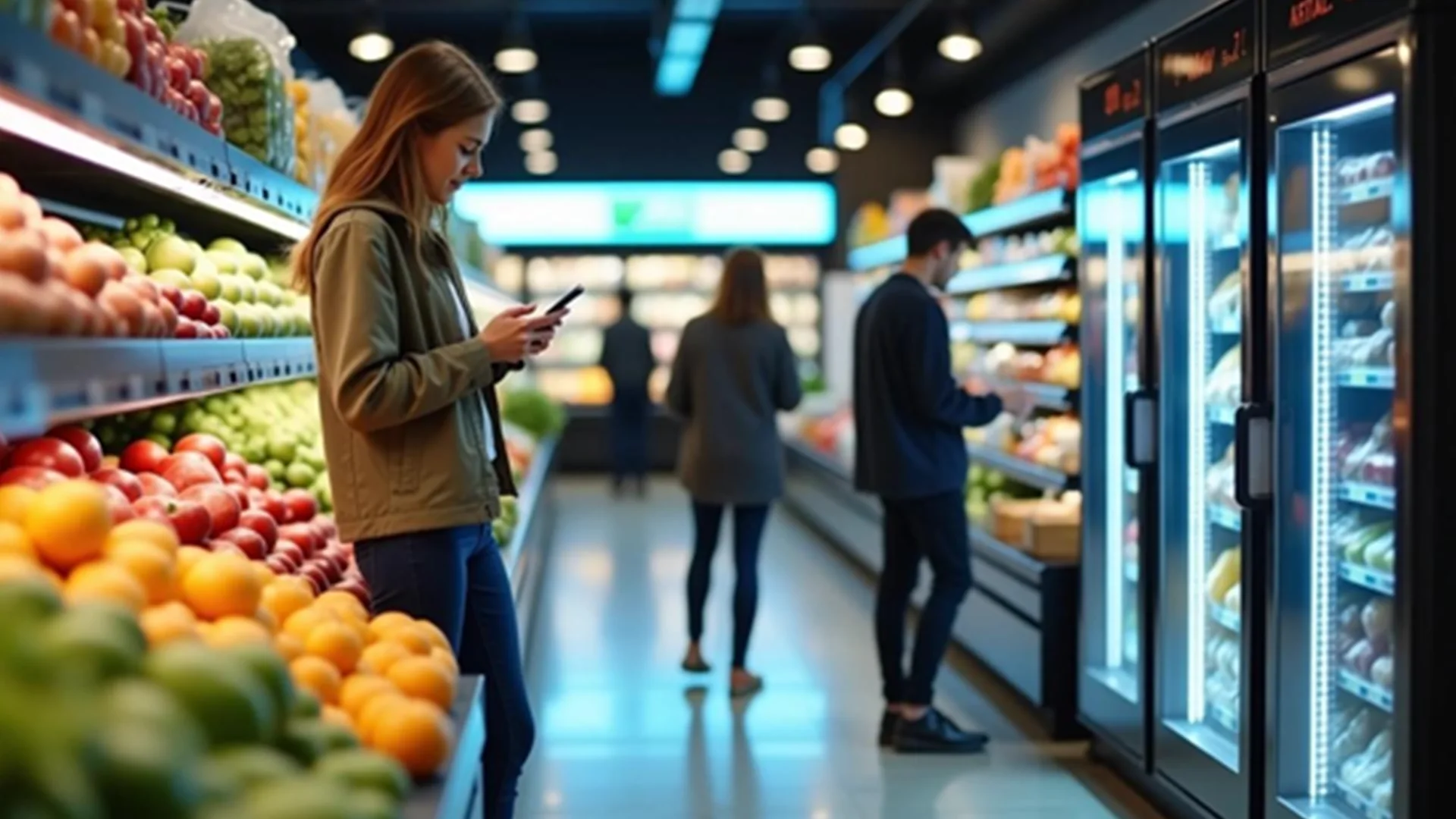
Newsletter Subscribe
Enter your email address below and subscribe to our newsletter

Enter your email address below and subscribe to our newsletter

| Getting your Trinity Audio player ready... |
Online grocery delivery is experiencing explosive growth. Forecasts predict the market will expand by more than US $1.12 trillion between 2023 and 2028, representing a 25.2 percent compound annual growth rate. Looking further ahead, projections show a surge from US $595.6 billion in 2024 to US $3.61 trillion by 2033.
The pandemic played a major role in this transformation. Online grocery orders rose by 151 percent in just a few days in March 2020, drawing more than 40 million U.S. households into digital shopping. Even now, research shows that nearly half of consumers plan to continue ordering groceries online. This shift has made quick, reliable, and technology-driven services the new standard.
As health-conscious shopping continues to rise, many consumers are also turning to functional products such as electrolyte drinks, which are now easier than ever to add to digital carts for pickup or delivery. Retailers are expanding these options to meet growing demand for convenient hydration solutions that fit into busy, wellness-focused lifestyles.
In the following sections, we will explore the top trends shaping grocery retail by 2025. These insights reveal what it will take to succeed in a market defined by changing consumer expectations.

Image Source: A3Logics
Grocery retailers are moving quickly to meet shifting consumer expectations, and by 2025 several trends will define how people shop for food. These changes are reshaping everything from browsing to checkout:

Image Source: Dinarys
Grocery platforms must choose the right business model to succeed in 2025. Each approach comes with its own set of advantages and challenges that affect how well the business runs and how much profit it can make.
The inventory-based model lets grocery platforms take complete control of their supply chain. These platforms buy products straight from manufacturers or suppliers and keep them in their own warehouses. A single entity manages the whole process, which leads to better quality control and faster deliveries.
FreshDirect shows how well this model works by getting fresh, local food and delivering it right from their warehouses. This builds customer trust through quality and freshness, but needs a lot of money upfront. New companies often struggle with warehouse costs, quality systems, transport logistics, and management expenses.
The marketplace approach differs from the inventory model by connecting sellers and buyers on one platform. People often call it the “Zero inventory model.” Platform owners work as middlemen and take a cut from each sale instead of handling inventory themselves.
Peapod proves this model works by teaming up with grocery stores that handle orders from their own stock. The marketplace model costs less to run, has minimal inventory risk, and offers more product choices to attract customers. However, these platforms find it hard to keep quality consistent across vendors and handle complex delivery schedules.
The hybrid model takes the best parts from both approaches to maximize strengths and reduce weaknesses. More grocery marketplaces now let sellers use their distribution networks for an extra fee, calling it “fulfillment by operator”. This helps support strategies like ship-to-store at lower costs.
Kroger launched its ship-to-home marketplace in 2020, showing how this hybrid approach works. They sell toys and homewares along with specialty food items. The hybrid model lets companies test new categories without risking inventory ownership. Grocers can expand into other high-margin categories while keeping their main grocery business running.
Grocery businesses entering the digital world face a crucial choice between custom development and Software-as-a-Service (SaaS) solutions. This investment decision will affect their launch timing and future success.
Custom grocery app development demands significant upfront investment between $30,000 and $300,000, based on complexity and features. These projects take 6-12 months to complete. The annual maintenance costs run about 15-20% of the original development cost. SaaS platforms provide a different approach with subscription-based pricing that starts at $99/month.
Custom solutions give businesses complete control over design and functionality. This makes them perfect for companies with specific needs or expansion plans. SaaS platforms come with pre-built features but limit customization to simple branding elements. Custom apps excel at implementing local features or AI-driven breakthroughs.
Wavergrocery stands out as a grocery ecommerce platform with its unique partnership-based pricing model. Companies pay only after their solution becomes operational. The platform uses machine learning to create customized recommendations and combines smoothly with ERPs, payment gateways, and delivery services. It adapts to both single-store operations and multi-store networks that have different delivery rules, making it flexible for businesses of all sizes.

Image Source: Dribbble
A competitive grocery platform in 2025 needs to deliver on both customer expectations and operational efficiency. Success depends on tools that simplify shopping, streamline logistics, and empower business growth.
Key features include:
Grocery shopping in 2025 will look very different from the way it did just a few years ago. Mobile-first habits, AI-driven personalization, subscription services, and flexible payment options are no longer extras but expectations. At the same time, grocery platforms must make strategic choices about their business models and the technology that supports them.
The companies that thrive will be those that balance customer convenience with operational efficiency. For shoppers, this means greater ease, better service, and more personalized experiences. For businesses, it means an opportunity to innovate and lead in a highly competitive space.
The future of grocery retail is already unfolding, and those who embrace these changes now will set the standard for the decade ahead.